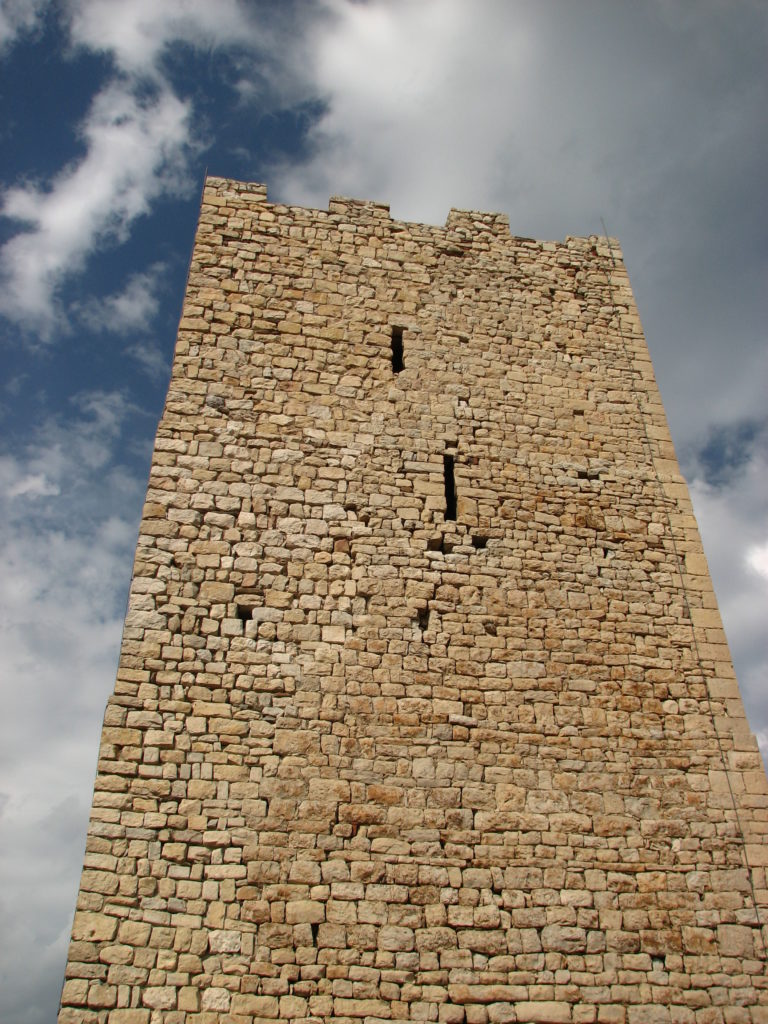One of Sardinia’s best preserved medieval fortresses stands in the village of Posada in Baronia, north-east of the Island, and it’s surrounded by historical mysteries and legends.
CASTELLO DELLA FAVA
demostudio
29 March 2022
No Comments
The fortress was home of the Sardinian Giudice and it is the emblem of medieval events that involved one of the most beautiful and picturesque villages in Italy, among the oldest on the Island.


The Symbol of Posada Village
Around 1300 a Turkish (or Saracen) fleet besieged Posada in attempt to conquer it by exhaustion and hunger. In order to mislead the besiegers, the inhabitants of the fortified village –worn-out and unable to withstand a battle, at this point – made a pigeon eat a handful of beans, which was all that remained of their foodstuffs. Before freeing it, they wounded the bird and it fell into the enemy camp with a full stomach. The Arab noticed both the strange swelling and the abundant meal, and this made them overestimate the resources of the castle, so that they gave up the siege. The name of “Castello della Fava”, a fortress built by the Giudice of Gallura rulers in the 13th century, originates from this legend and this legendary tale doesn’t differ much from reality. From the 14th century Posada endured many raids from Saracen pirates, who eyed it up from the sea as a treasure and often pillaged it. Not by chance the medieval village – included in the prestigious club of the most beautiful villages in Italy – is a ‘labyrinth’ of narrow alleys and hidden piazzas. The architecture itself recalls ambushes, assaults and escapes.
Built with unrefined stone blocks, the castle – open to the public – stands out against a verdant calcareous hill on which slope is perched the current village. The hill can be easily climbed, and from its top the crenellated tower and the ruins of the walls can be fully admired; its irregular, quadrangular layout once surrounded a series of tanks. A beautiful view stretching from Rio Posada Valley (to explore by kayak) to the enchanting beaches around the seaside village of San Giovanni di Posada can also be enjoyed. This is the territory of Tepilora’s Park, one of the largest and most beautiful green areas on the Island, with paths running through forests, springs, lagoons and sand dunes, ideal for trekking and biking excursions.
During the Judicial era Posada was at the peak of its historical events, a borderland halfway between Gallura and Arborea kingdoms. For a long time the castle was fought over between them and it even fell into the hands of the Aragonese before the Arborese took it back under the command of Brancaleone Doria. Unlikely to be a military garrison, it probably was home to the ruling parties, or Eleonora d’Arborea’s residence; some think it was a tourist residence ante litteram. Posada was a borderland even before the Middle Ages: as a matter of fact, the toponym “Pausata” means ‘staging post’ and ‘frontier location’. Its history began around the 5th century BC on the ashes of the Phoenician Feronia, perhaps an Italic-Etruscan settlement, one of the oldest inhabited areas of Sardinia.
Fonte: https://www.sardegnaturismo.it/
PH: Castello della Fava – Posada. Credits: Gianni Careddu.
B&B BLUE RELAX SARDEGNA
località Turrutto – 08020
Torpè (NU) – Italia
Per Info e Prenotazioni:
Tel: +393383103495
E-mail: info@bluerelaxsardegna.com
_______________________
P. IVA 11734450965
IUN: F0531
CIN: IT091094B4000F0531
Copyright © 2023 - All rights reserved.

